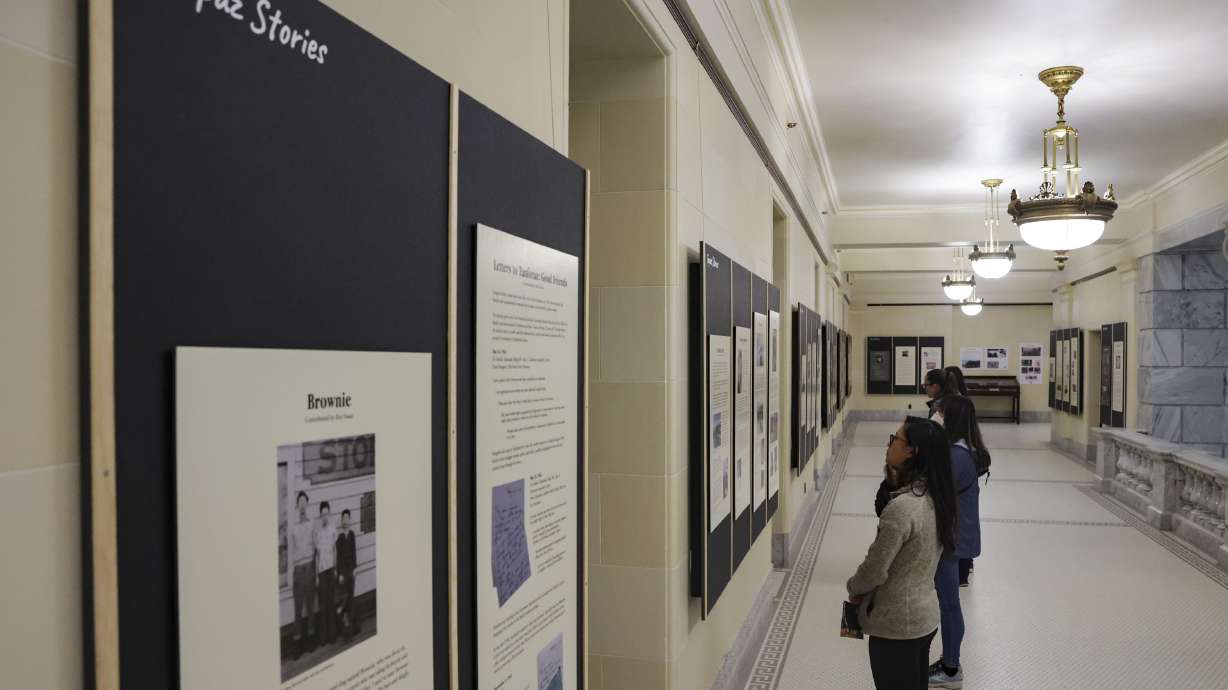Estimated read time: 3-4 minutes
This archived news story is available only for your personal, non-commercial use. Information in the story may be outdated or superseded by additional information. Reading or replaying the story in its archived form does not constitute a republication of the story.
PARK CITY — Stories are bridges. Or at least that's what Ruth Sasaki, editor of "Topaz Stories" and daughter of a World War II Japanese American internment camp survivor, thinks.
Sasaki has spent the last six years collecting stories of the more than 8,000 Japanese Americans who survived incarceration at Topaz, a WWII detention camp near Delta. Most of them or their descendants now live in the San Francisco area.
"My hope was to not just present facts and information but actual stories about individuals so that people could develop empathy for the normal, everyday people who went through this experience that was totally unjustified," she said.
Sasaki worked with Friends of the Topaz and the Topaz Museum to turn the stories into a traveling museum exhibit. The exhibit is open to the public at the Kimball Junction branch of the Summit County Library in Park City.
Kirsten Nilsson, a children's librarian and exhibit coordinator at the library, said the Topaz Stories exhibit jumped out to her immediately. She developed a personal interest in Topaz after visiting the museum in Delta and reading several books about it.
In her view, Utah could do more to help people learn about what happened at Topaz: "My kids grew up and never heard anything about the Japanese internment camps (at school)," she said. "Not to mention that there was one right here, in our state."
It's a different kind of exhibit than most that pass through the library — it has a lot of text, and Nilsson said she has seen visitors spend upward of 30 minutes reading the stories.
When exhibit visitors read the stories, Sasaki said she hopes they make the connection between the injustices of the past and the injustices of the present and future.
She felt this need acutely in 2021, just before the stories were shared with the public: "There was a wave of anti-Asian violence all throughout the country, and it was killing me that these stories were just sitting on my hard drive."
A major goal of the project was to create empathy so people don't demonize outsiders, Sasaki said. And, it's a reminder that injustices can and do happen on American soil.
"My hope is that they will recognize these as American stories — about two-thirds of those incarcerated without due process were American, and they were forced from their homes and imprisoned on American soil," she said.
Michael Tunnell, former BYU professor and author of "Children of Topaz," also felt COVID-era anti-Asian sentiment was eerily similar to some attitudes during the war.
"It's almost trite to say anymore that those that forget their history are doomed to repeat it, but that's just absolutely true," Tunnell said. "Remembering that, and remembering mistakes we made, are the only way we can avoid doing the same thing when it happens again."
Japanese Americans were uniquely targeted during the war years because their race made them easily identifiable, he said. German and Italian Americans, who were harder to pick out of a crowd, got a pass.
Significantly, there was never an incident where any Japanese Americans did anything to support Japan during the war — which was the U.S. government's primary fear, Tunnell said.
Relics of the "completely unfounded and unconstitutional" internment of Japanese Americans are still in Utah today. Visiting the museum and site in Delta makes history "accessible" for children, Tunnell said.
The "Topaz Stories" exhibit will be on display in Park City until June 1, when it will move to the Uintah Heritage Museum in Vernal.
The exhibit's second season will be August 2024 through June 2025. Utah organizations such as libraries, museums, community centers, schools or universities who are interested in hosting the exhibit during that time should apply online before May 31.










